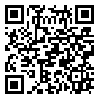Volume 7, Issue 2 (Spring 2021)
Caspian J Neurol Sci 2021, 7(2): 118-131 |
Back to browse issues page
1- Department of Neurosurgery, Guilan University of Medical Sciences, Rasht, Iran.
2- Burn and Regenerative Medicine Research Center, Guilan University of Medical Sciences, Rasht, Iran.
3- Medical Futurology Student Scientific Association, Burn and Regenerative Research Center, Guilan University of Medical Sciences, Rasht, Iran.
4- Department of Neuroscience and Addiction Studies, School of Advanced Technologies in Medicine, Tehran, Iran.
5- Poursina Hospital, Guilan University of Medical Sciences, Rasht, Iran.
2- Burn and Regenerative Medicine Research Center, Guilan University of Medical Sciences, Rasht, Iran.
3- Medical Futurology Student Scientific Association, Burn and Regenerative Research Center, Guilan University of Medical Sciences, Rasht, Iran.
4- Department of Neuroscience and Addiction Studies, School of Advanced Technologies in Medicine, Tehran, Iran.
5- Poursina Hospital, Guilan University of Medical Sciences, Rasht, Iran.
Abstract: (1515 Views)
Background: Traumatic brain injury is believed to be a public health disorder with some complications. Post Traumatic Neurocognitive Disorders (PTND) received much attention among these complications because of the high prevalence of mild traumatic brain injuries. On the other hand, advanced neuroimaging is increasingly becoming an exciting modality in the field of traumatic brain injury. Magnetic resonance spectroscopy (MRS) provides a new window to understand the detailed biochemistry alterations following traumatic brain injury. Therefore, some researchers have addressed the relations between MRS data and PTND.
Objectives: The research aimed to achieve the biochemistry alterations following TBI and find the relations between these alterations and PTND based on published literature in this field.
Materials & Methods: With this mind, a systematic search in MEDLINE and EMBASE databases performed to identify relevant published articles without date limitation. The systematic search keyword-targeted all MRS data relevant to the post traumatic neurocognitive disorders.
Results: Of the search results, a total of 22 journal articles were reported relations between MRS data and neurocognitive disorders. A variety of questionnaires and computerized tests has been used to detect neurocognitive outcomes. Most studies focused on N-acetyl aspartate (NAA), Choline (Cho), Creatine (Cr), Myo-inositol (MI), and their ratios. As MRI scanners are becoming stranger detecting extra-metabolites such as glutamate, glutamine and glutathione are more reliable. In this regard a few studies reported significant relations between alterations in these metabolites and PTND.
Conclusion: MRS is a powerful tool that can provide important data to detect long-term neurocognitive disorders following TBI.
Objectives: The research aimed to achieve the biochemistry alterations following TBI and find the relations between these alterations and PTND based on published literature in this field.
Materials & Methods: With this mind, a systematic search in MEDLINE and EMBASE databases performed to identify relevant published articles without date limitation. The systematic search keyword-targeted all MRS data relevant to the post traumatic neurocognitive disorders.
Results: Of the search results, a total of 22 journal articles were reported relations between MRS data and neurocognitive disorders. A variety of questionnaires and computerized tests has been used to detect neurocognitive outcomes. Most studies focused on N-acetyl aspartate (NAA), Choline (Cho), Creatine (Cr), Myo-inositol (MI), and their ratios. As MRI scanners are becoming stranger detecting extra-metabolites such as glutamate, glutamine and glutathione are more reliable. In this regard a few studies reported significant relations between alterations in these metabolites and PTND.
Conclusion: MRS is a powerful tool that can provide important data to detect long-term neurocognitive disorders following TBI.
Keywords: Magnetic resonance spectroscopy, Brain injuries, Brain concussion, Neurocognitive disorders
Type of Study: Review |
Subject:
Special
Received: 2021/07/1 | Accepted: 2021/04/30 | Published: 2021/04/30
Received: 2021/07/1 | Accepted: 2021/04/30 | Published: 2021/04/30
| Rights and permissions | |
 | This work is licensed under a Creative Commons Attribution-NonCommercial 4.0 International License. |





